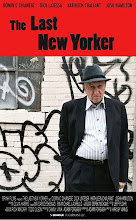The first Metropolitan Opera site was located at 1411 Broadway at 39th street, where it opened in 1883. It was built by a group of wealthy businessmen who wanted their own theatre, the nouveau riche who had been rejected by society from owning boxes at the Academy of Music on East 14th street, where opera had been presented in New York City since 1854. Vanderbilts, Goulds and Morgans together raised funds for a larger opera house with three tiers of boxes, which was an instant success and caused the cancellation of the Academy of Music's season in 1886.
In 1892, the building was destroyed by fire and was immediately rebuilt, reopening in the fall of 1893. Another major renovation was completed in 1903. The theater's interior was extensively redesigned by the architects Carrère and Hastings. The familiar red and gold interior associated with the house dates from this time. The old Met had a seating capacity of 3,625 with an additional 224 standing room places.
Photo Credit: American-Journal.org
Cover, Grand Opera Season, 1912-1913
Which operas were performed during the season?
They opened with MANON LESCAUT in November 1912 and continued with La Boheme, Tannhauser, La Gioconda, Madama Butterfly, Gotterdammerung, Rigoletto, Konigskinder, Cav/Pag, Faust, Die Zauberflote, La Fanciulla Del West, Il Trovatore, Parsifal, Hansel und Gretel, Aida, Die Meistersinger von Nurnberg, Il Segreto di Susanna, Die Walkure, Tosca, Orfeo et Eurice, Les Hugeunots, Tristan und Isolde, Il Barbiere di Siviglia, Otello, Les Contes d'Hoffmann, Siegfried, Manon, Das Rheingold, La Traviata, Le Donne Curiose, Cyrano, Lohengrin, Boris Godunov and Lucia di Lammermoor. That's 34 operas including a Ring cycle and some very large productions requiring a huge orchestra and chorus.
PARSIFAL, Good Friday Performance and cast. Its first performance was ten years earlier, premiering on Christmas Eve, 1903, in its first staged performance outside the Bayreuth Festival, over the objections of the Wagner family, which had tried to sue to stop the production.
Carl Jorn, who sang the role of PARSIFAL
Director................Anton Fuchs
Set Designer............Leopold Rothaug [Debut]Set Designer............Burghart and Co. [Debut]
Costume Designer........Blaschke and Cie [Debut]
Lighting Designer.......Carl Lautenschläger
New Stage of the Metropolitan Opera, rebuilt for the new production of PARSIFAL.
Magazine date February 6, 1904. Read about it here.
BORIS GODUNOV March 19, 1913, first production in America. Given in Italian, not Russian, and performed only four times.
Conducted by Arturo Toscanini
What an incredibly rich physical production in a romantic realist style that is considered out of date today.
Adamo Didur, Polish bass, as BORIS (fantastic costume!)
Louise Homer as MARINA
Paul Althouse, making his house debut as DMITRI
Season Boxholders. I don't recognize many of these names but I'm sure that they included the wealthy and powerful of the day. I do note the name of William Salomon (Salomon Brothers much later became part of Citigroup), and you can read about his lost mansion on Fifth Avenue here.
McCreery's was a fine department store of the day - see their fur storage ad upper left.
Here's the seating plan for the Family Circle and Balcony sections.
This ad on the right caught my eye, for E. M. Gattle Designs. I love the way their ad is worded, with just enough friendliness mixed with hauteur. I wasn't familiar with their atelier, so I looked it up, and discovered that Gattle was a very exclusive jewelry design and manufacturing company with a list of illustrious customers at the turn of the last century.
From Fashion-Glossary.com:
Gattle refers to a jeweler founded by Emanuel Gattle in the latter part of the 19th century. E.M. Gattle was located on Broadway in the theatre district. In 1907, the company moved to the corner of 38th Street and Fifth Avenue and, later, to 55th Street and Fifth Avenue, next to the St. Regis Hotel. One of their notable customer was Enrico Caruso, who shopped Gattle stores for jewelries. However, he was not only a shopper of Gattle, he also allowed his name and photograph to be used in Gattle advertising. Gattle became successful until the time they closed their doors.
The firm closed in 1940, several years before the outbreak of World War II.
There's a Chase Bank at the site of the Old Met, and when I was in the Garment District regularly and used that bank every week I liked going down to the lower level to look at a mural behind the teller's cages that depicted operas and their characters. I used to wonder why, until I did some research and discovered the history of the location. It may still be there.






















No comments:
Post a Comment